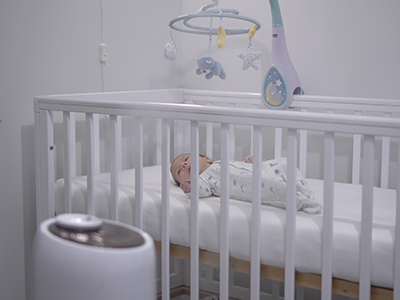As the coronavirus (COVID-19) pandemic has continued, many of us are finding it difficult to keep up with healthful eating and exercise routines ourselves, let alone to encourage these behaviors in our children. With families balancing multiple responsibilities, and children spending more time at home, it can be challenging to make sure that children are eating nutritious meals and choosing healthy snacks. Additionally, with the closure of parks and recreation facilities, cancelled sports and removal of formal physical education, children have significantly fewer opportunities for exercise. Stay-at-home orders mean that children are taking fewer steps and moving their bodies less.
While it may feel daunting to tackle one more area of life right now, making even a few simple modifications in your children’s eating and exercise routines may actually lead to positive changes for your children and your family. For some children, we are seeing that stay-at-home orders and social distancing and worry about contracting the COIVD-19 illness are worsening underlying difficulties with concentration, behavior, mood and stress/anxiety. Fortunately, we know that healthful eating and exercise are linked with improvements in children’s behavior, attention, mood, stress/anxiety levels and sleep, and even with boosting their immune systems. So devoting a little bit of time and effort to these routines may benefit your children’s physical and mental health in multiple ways. Here are a few tips that can help.
Focus on the Big Four Food categories: vegetables, fruits, healthy protein and healthy carbs
Children should be eating a balanced diet of vegetables, fruits, healthy protein and healthy carbohydrates. Consider having kids help you design a “menu” of choices in each category that they enjoy and eat, and post this menu on the refrigerator or other prominent place in the kitchen. Kids can then mix and match their favorite foods from each category for meals and snacks! Families can make it a fun challenge to incorporate one food from each category into meals and snacks.
What are some examples of foods from these categories?
All vegetables are great choices! More colorful vegetables, particularly GREEN vegetables, have higher levels of vitamins and nutrients. Especially for lunch, dinner and snacks, encourage children to fill up a quarter to a half of their plate with vegetables. Fruit: All fresh fruit is good, but try to limit dried fruit. The water that naturally occurs in fruit is important for balancing the natural sugar levels and helps to keep us feel full longer. Healthy proteins include: eggs, low-carb dairy, lean meats, fish/seafood, beans and nuts or nut butters. Healthy carbohydrates include whole grains such as whole wheat breads, whole grain crackers, brown rice, quinoa, pure oats and stove-popped popcorn. It is important to choose carbohydrates that are also high in fiber (>3-4 g per serving) and low in added sugar (closer to 0 is better!). The Choose My Plate website has great examples of foods in each category, and Healthyeating.org has some fun kid-friendly games on nutrition.
Great snacking ideas that feature vegetables and fruit include: carrots, celery or sliced bell peppers (with hummus, guacamole, or nut butter); apples (with cheese, whole nuts or nut butter); blueberries, strawberries or favorite sliced up fruit (in plain yogurt); veggie pita pocket/roll-up (spread a whole grain tortilla or pita-pocket with hummus and stuff with sliced up veggies); or a veggie and turkey roll up (roll up sliced veggies inside a slice of turkey or other deli meat).
Plan ahead for healthy eating
Children will only choose healthy food options if they’re available and easily accessible! Before going grocery shopping, sit down as a family and make a grocery list that includes items from your Four Main Food Groups Menu. Consider having a running grocery list (paper, electronic) that has foods that your children enjoy from each of the healthy food categories. Once you are home from the grocery store, set aside time for the whole family to help with prepping the foods. For example, throw on some fun music, have caregivers or older children cut up fruits and vegetables, and let younger children be in charge of putting them away in storage containers. Also consider setting aside some time weekends or other any free times to pre-make components of meals, or making grab & go options for healthy snacks. Then make sure that the healthy options are within easy sight and reach – we’re more likely to choose the sliced cantaloupe or hummus if it’s in the first thing we see in the refrigerator, and the chips and candy are out of sight in the back of the pantry!
Schedule time for movement and exercise
Experts recommend that children achieve 60 minutes of moderate-vigorous physical activity per day, which is any movement that gets their heart rate up! Physical activity can occur all at once or through bursts throughout the day, so even a few minutes of movement at a time can be very helpful. Children are naturally active, but as they are spending most of their time at home, they no longer have opportunities for movement during transitions between activities. While routines are disrupted, families may find it helpful to create visual daily schedules with times for school/learning, creativity, fun, meals and sleep, as well as scheduled times for outdoor activity, movement breaks and “recess” or sports “practice.” Caregivers can also consider setting daily limits on screen times or having portions of the day that are “no screen” periods. But be easy on yourself – screen time is likely to be higher than normal these days!
Below is an example daily routine that families can modify to make it work for their needs. When school is not in session, families can swap in alternative options for “academic time,” such as chores, learning or play. The areas in green are scheduled times for movement.
| By 9:00 am |
Breakfast/Morning Routine |
| 9:00 – 10:00 |
Outdoor time |
| 10:00 – 11:00 |
Academic Time |
| 11:00 – 11:15 |
MOVEMENT BREAK! |
| 11:15 – 12:00 |
Creative Time |
| 12:00 – 12:30 |
Lunch |
| 12:30 – 1:00 |
RECESS! |
| 1:00 – 2:00 |
Home chores |
| 2:00 – 3:00 |
Academic Time |
| 3:00 – 3:15 |
MOVEMENT BREAK! |
| 3:15 – 4:00 |
Academic Time |
| 4:00 – 5:00 |
Outdoor time |
| 5:00 – 6:00 |
Family Time |
| 6:00 – 7:00 |
Dinner |
Ideas for indoor, outdoor and neighborhood activity
While children are indoors, consider using online exercise videos that are family friendly. The following websites have a variety of movement ideas for children and families: fun movement and mindfulness (www.gonoodle.com), indoor recess (www.playwords.org) and indoor exercise classes through the YMCA (www.ymca360.org). For kids who are missing physical education, PBS has a variety of online classes. And it may be fun to have a daily family dance parties, such as before or after dinner!
If you have a backyard or secluded outdoor area, try creating “no touch” scavenger hunts in which children can look for colors, shapes, flowers/plants or animals and check them off a list. Find a nearby sidewalk or empty parking lot to draw pictures with chalk or play hopscotch. On days with more time to prepare, create an obstacle course with challenges to run laps or jump over objects. During the warmer months, encourage kids to take part in outdoor chores such as raking, weeding or planting the garden. Fortunately, the gradual opening of parks and outdoor hiking areas offers a lot more opportunity for outdoor physical activity – just make sure to practice social distancing (stay 6 feet apart from other people), and bring your masks along! And for children who are missing sports, they can practice their moves or drills in the backyard or a secluded outdoor area (such as a park, empty parking lot), or some coaches may be willing to provide practice or lessons via video chat.
Make it fun!
Children are more likely to engage in any activity or routine when it’s fun! When prepping food or planning meals, throw on some music and make it a “food prep party.” For younger kids, try cutting sandwiches into fun shapes or making a smiley face out of carrots and tomatoes. If you are creating family schedules with times for exercise/movement, let kids decorate their schedules to add some individual creativity. And adding in some friendly competition can be especially fun and motivating for children and teens of all ages – try challenging your family to see who can get the most steps in a day, who can have the most colorful plate at dinner or try the most new vegetables in the week, or who can have the craziest dance move during the family dance party!
Involve children whenever possible
Children love to be involved! When they are included, you send the message that they are valued and important, and they will be more likely to become invested in the activity. It’s also a great way to learn about their interests and their suggestions, which will go a long way in keeping them engaged. Children should be included in the grocery list planning, prepping snacks and meals or cooking. They will also be excited to help with creating family goal charts for movement, or helping to pick out online exercise videos. Having a position of leadership, such as the “Family Mask Checker” (who makes sure everyone is wearing their mask before the evening walk), can also be especially fun for younger kids.
Build motivation
For most children, spending more time moving and exercising will be fun, and they will be motivated to choose healthy food options when they are involved in the process. To keep all children motivated, and especially to encourage those children who having a difficult time making changes, remember to provide praise and give them positive attention. Praise should be specific, so they know exactly what it was that they did well (for example, “Great job moving your body today!”; “I really like how you chose a healthy snack”; or “I love going on morning walks with you”). And remember, children look to caregivers for guidance, so making healthy choices should be a family goal and modeled by caregivers. So creating family goal charts and displaying them prominently may be a great way to keep everyone motivated! Children will be especially motivated to add check marks or stickers when they meet their daily goals. For children who need extra motivation, you may consider creating a reward system to go along with the daily/weekly goal charts. And remember – rewards do not need to cost money, they just need to be motivating for your child.
 https://riseandshine.childrensnational.org/wp-content/uploads/2024/07/teen-girls-fighting-feature.jpg
300
400
Danielle Robbins
https://riseandshine.childrensnational.org/wp-content/uploads/2017/11/childrens_riseandshine_logo.jpg
Danielle Robbins2024-07-24 12:10:252024-07-24 12:10:25Helping your child through a friendship breakup
https://riseandshine.childrensnational.org/wp-content/uploads/2024/07/teen-girls-fighting-feature.jpg
300
400
Danielle Robbins
https://riseandshine.childrensnational.org/wp-content/uploads/2017/11/childrens_riseandshine_logo.jpg
Danielle Robbins2024-07-24 12:10:252024-07-24 12:10:25Helping your child through a friendship breakup


 Kelsey Borner, Ph.D., is a pediatric pain psychologist. She is specializes in working with youth with various chronic pain conditions, functional symptom disorders (including functional neurological symptoms and psychogenic non-epileptic spells) and other nervous system disorders (including Postural Orthostatic Tachycardia Syndrome; POTS).
Kelsey Borner, Ph.D., is a pediatric pain psychologist. She is specializes in working with youth with various chronic pain conditions, functional symptom disorders (including functional neurological symptoms and psychogenic non-epileptic spells) and other nervous system disorders (including Postural Orthostatic Tachycardia Syndrome; POTS).



















Leave a Comment
Want to join the discussion?Feel free to contribute!